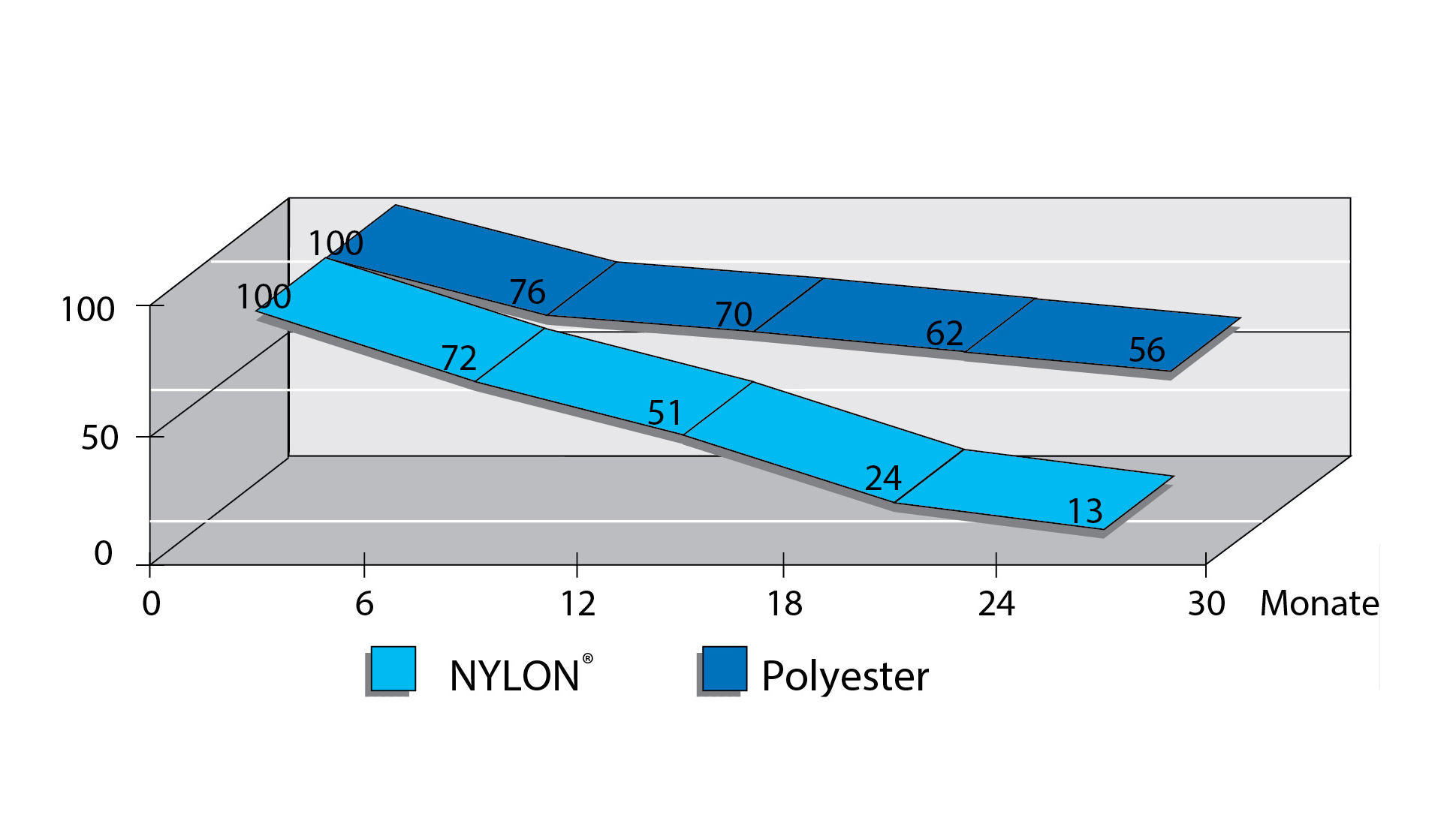More effective energy conversion through controlled elongation
- Polyester has a higher rate of initial loading with a flatter load over time. Nylon webbing has a lower initial loading with an increasing load over time. Therefore polyester reduces HIC values due to quicker loading – especially of the lap belts
- Nylon webbing has a elongation rate of 20 to 25% where polyester elongation rates can be specifically milled into the webbing ranging from 6% to 18% depending on the application.
- Schroth uses 6% to 7% elongation webbing in lap belts for critical initial loading of pelvis and 7% to 14% elongation webbing in the shoulders depending on the specific belt configuration.
- Polyester provides better color fastening and is resistant to fading
Reliable dying and fixation process guaranties identical quality for each lot
Nylon’s surface is more slippery allowing micro slip through the adjusters (need to frequently readjust for a tight fit)
Water and moisture
- Polyester is Hygrophobic - won't support mold and mildew
- Nylon is Hygroscopic- will absorb water and loses some tensile strength and results in more potential increased elongation
- Polyester has less tensile loss when subject to moisture
Resistance to harsh environments
- Polyester is much more resistant to damage from oil, battery and other acids, dirt, and grit. It can generally be cleaned with warm water
- Polyester offers superior temperature resistance to severe heat and fire well surpassing all DOT, SFI, and FIA standards
